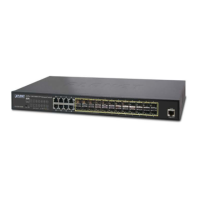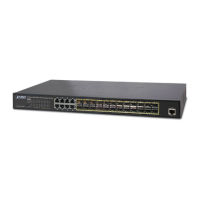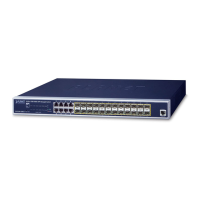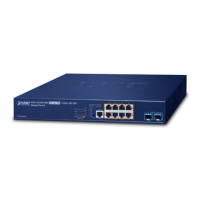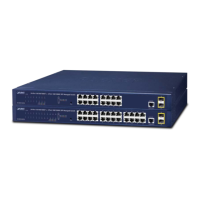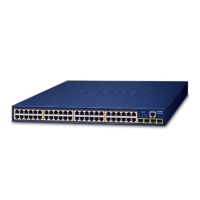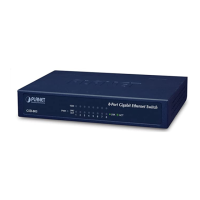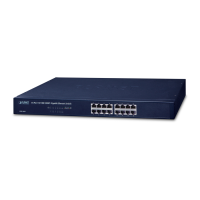User’s Manual of GS-5220 LCD Series
362
clients. The initial frame (any kind of frame) sent by a client is snooped by the switch, which in turn uses the
client's MAC address as both username and password in the subsequent EAP exchange with the RADIUS server.
The 6-byte MAC address is converted to a string on the following form "xx-xx-xx-xx-xx-xx", that is, a dash (-) is
used as separator between the lower-cased hexadecimal digits. The switch only supports the MD5-Challenge
authentication method, so the RADIUS server must be configured accordingly.
When authentication is complete, the RADIUS server sends a success or failure indication, which in turn causes
the switch to open up or block traffic for that particular client, using static entries into the MAC Table. Only then
will frames from the client be forwarded on the switch. There are no EAPOL frames involved in this
authentication, and therefore, MAC-based Authentication has nothing to do with the 802.1X standard.
The advantage of MAC-based authentication over 802.1X is that several clients can be connected to the same
port (e.g. through a 3rd party switch or a hub) and still require individual authentication, and that the clients
don't need special supplicant software to authenticate. The disadvantage is that MAC addresses can be spoofed
by malicious users, equipment whose MAC address is a valid RADIUS user can be used by anyone, and only the
MD5-Challenge method is supported.
The 802.1X and MAC-Based Authentication configuration consists of two sections, a system- and a port-wide.
Overview of User Authentication
It is allowed to configure the Managed Switch to authenticate users logging into the system for management
access using local or remote authentication methods, such as telnet and Web browser. This Managed Switch
provides secure network management access using the following options:
Remote Authentication Dial-in User Service (RADIUS)
Terminal Access Controller Access Control System Plus (TACACS+)
Local user name and Privilege Level control
RADIUS and TACACS+ are logon authentication protocols that use software running on a central server to
control access to RADIUS-aware or TACACS-aware devices on the network. An authentication server contains a
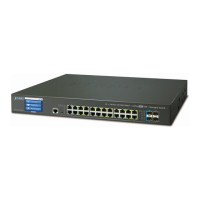
